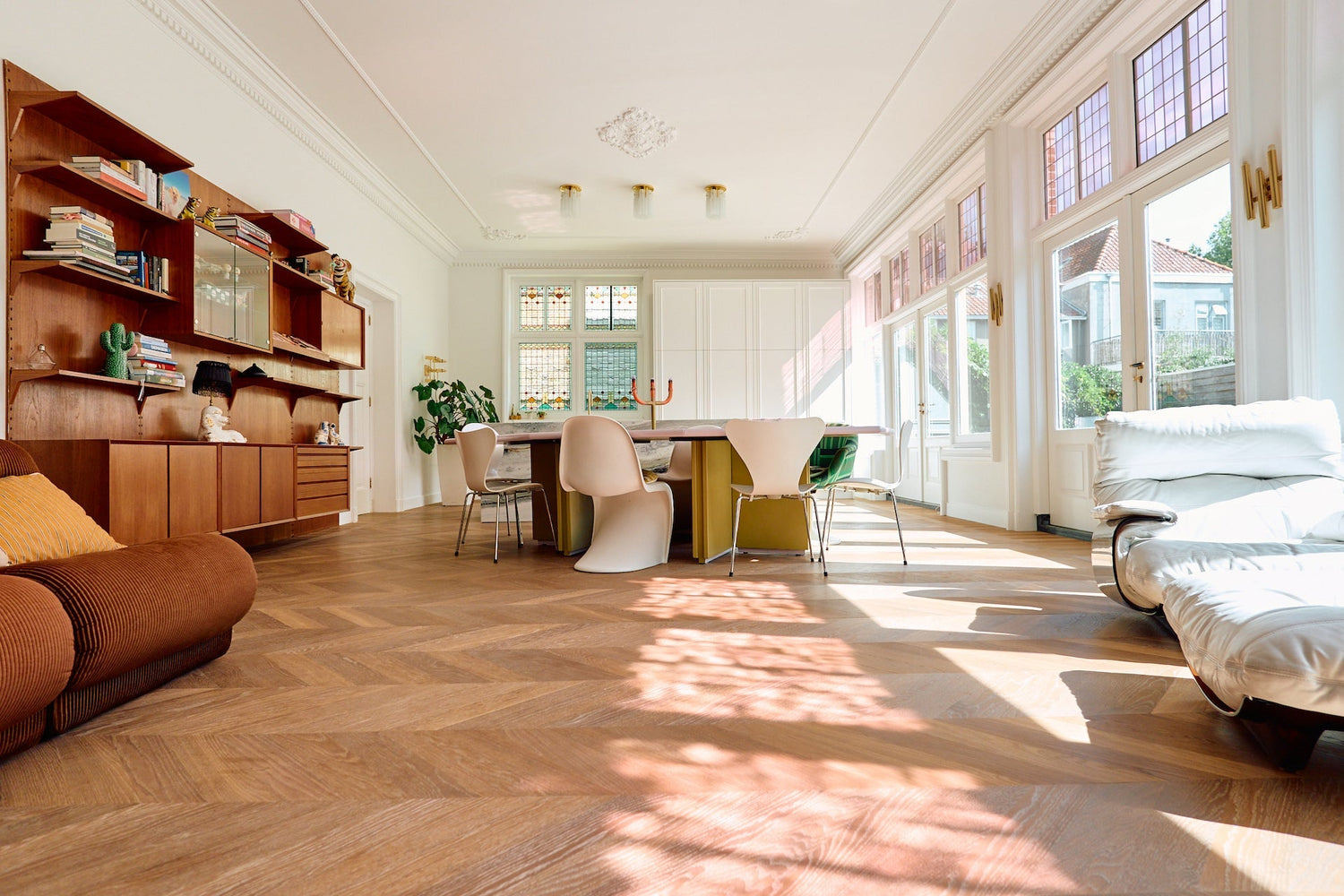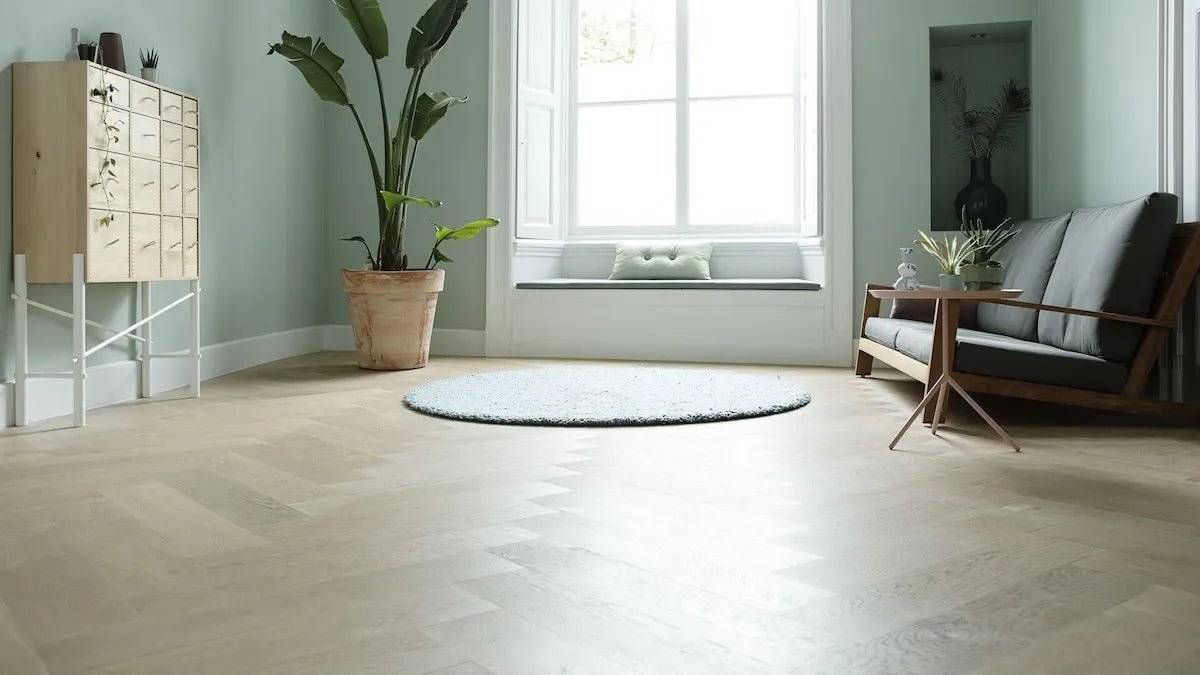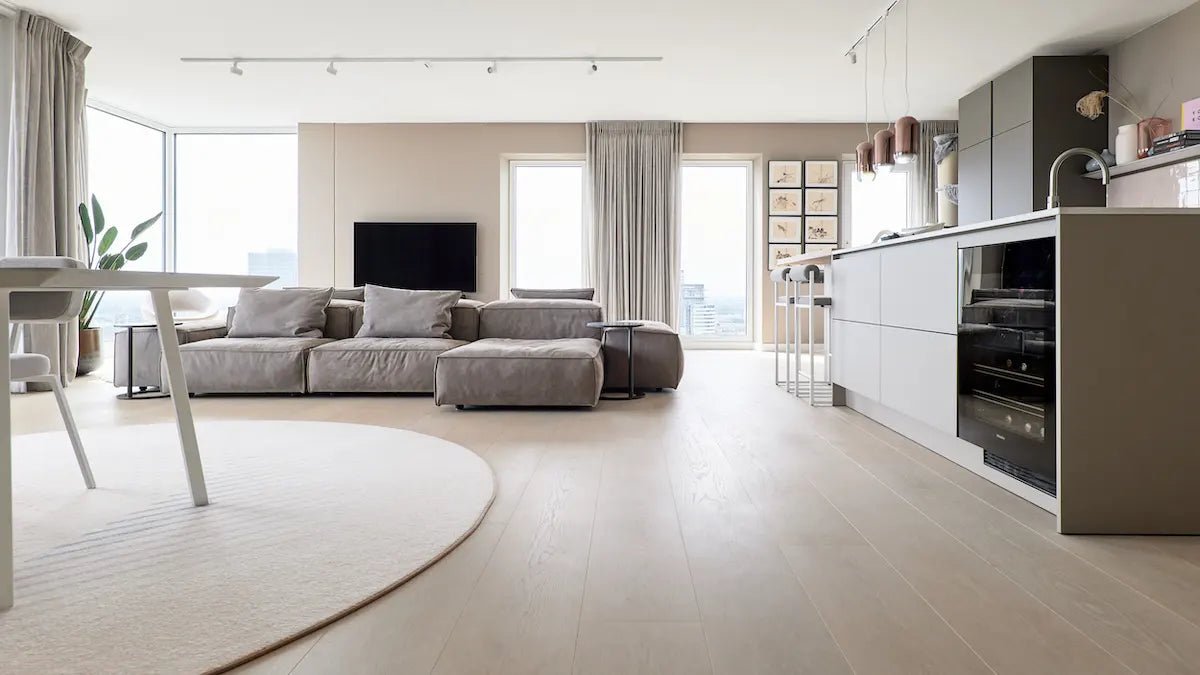Vloerverwarming Op Een Houten Vloer
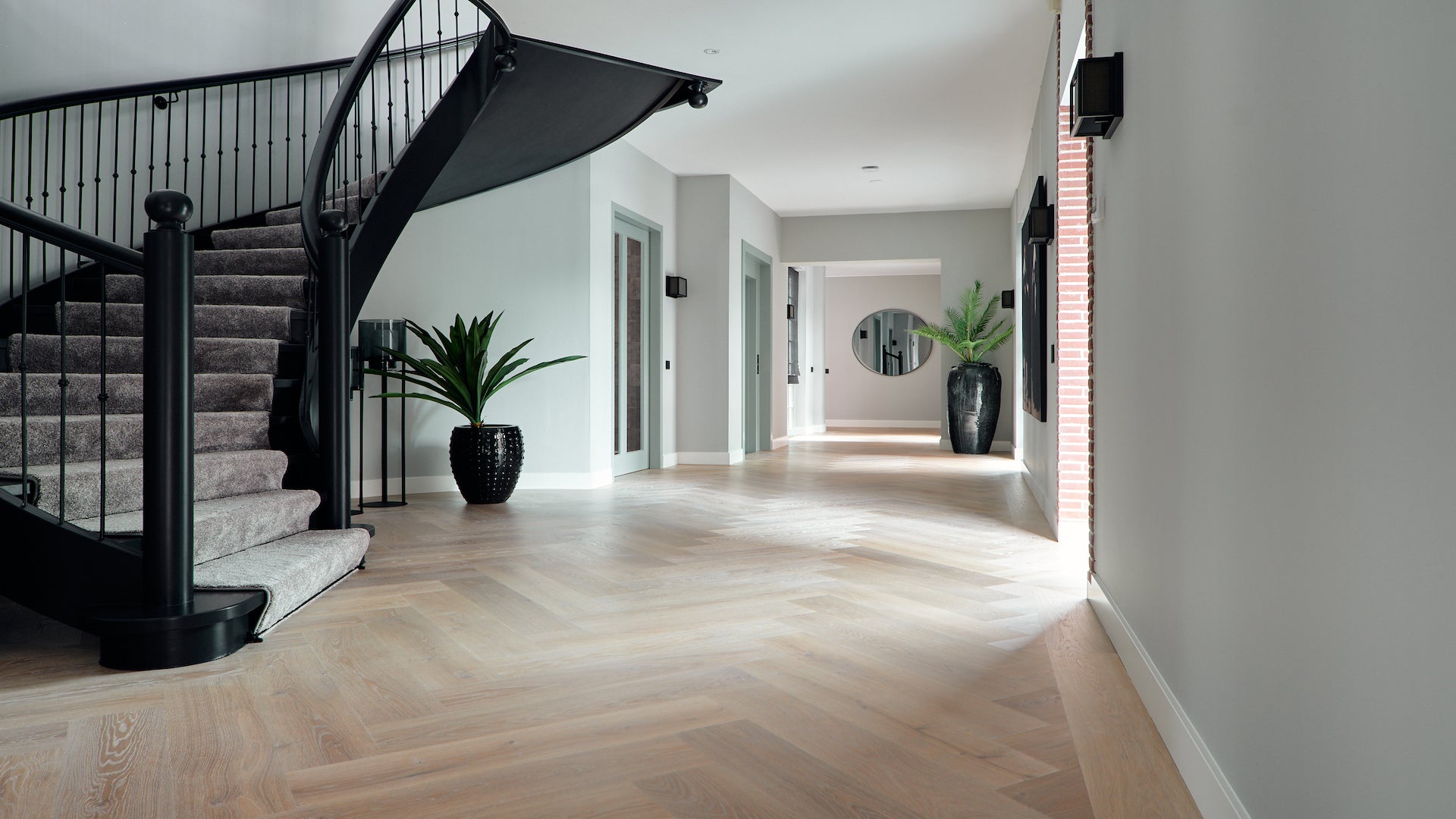
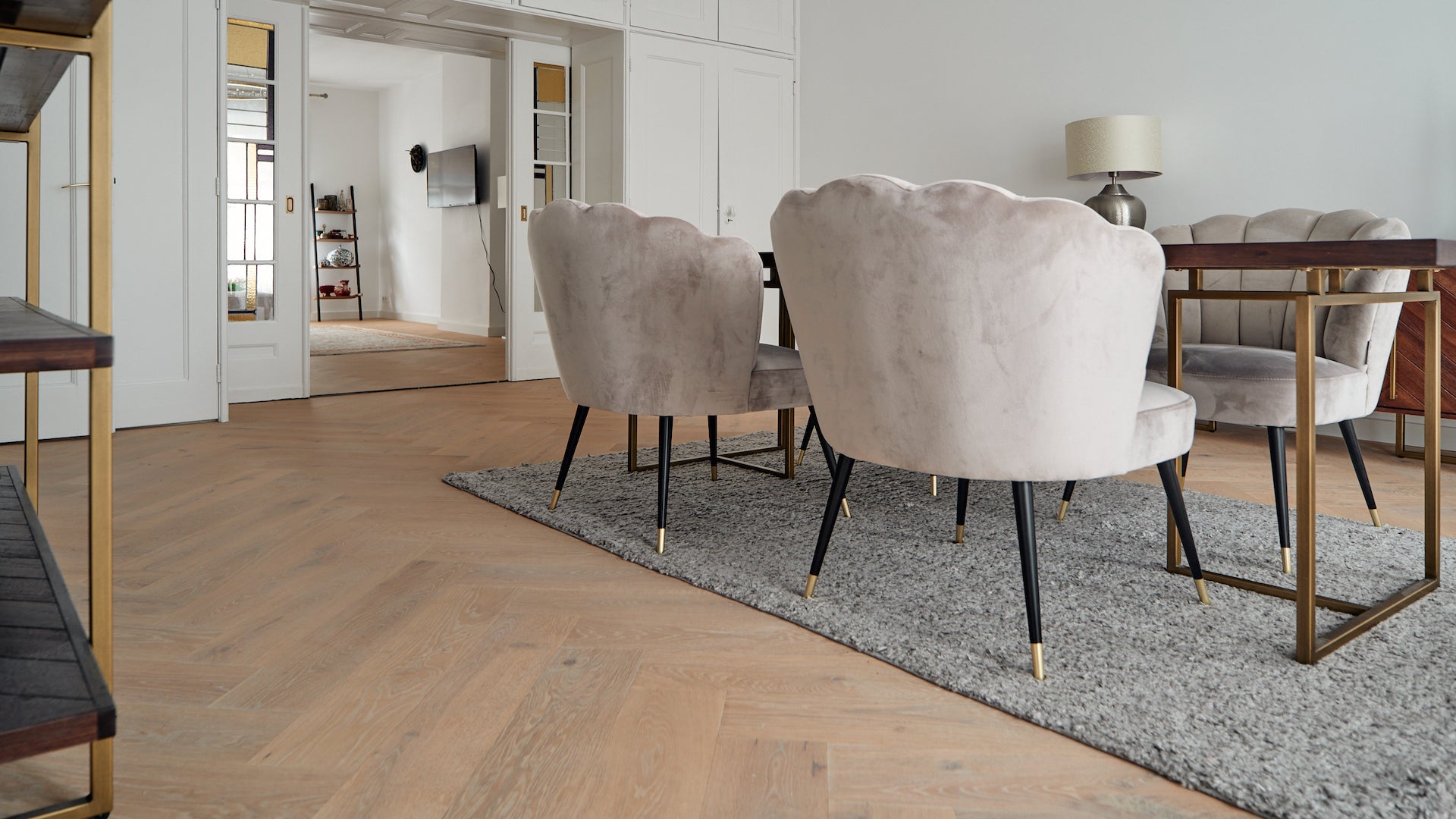
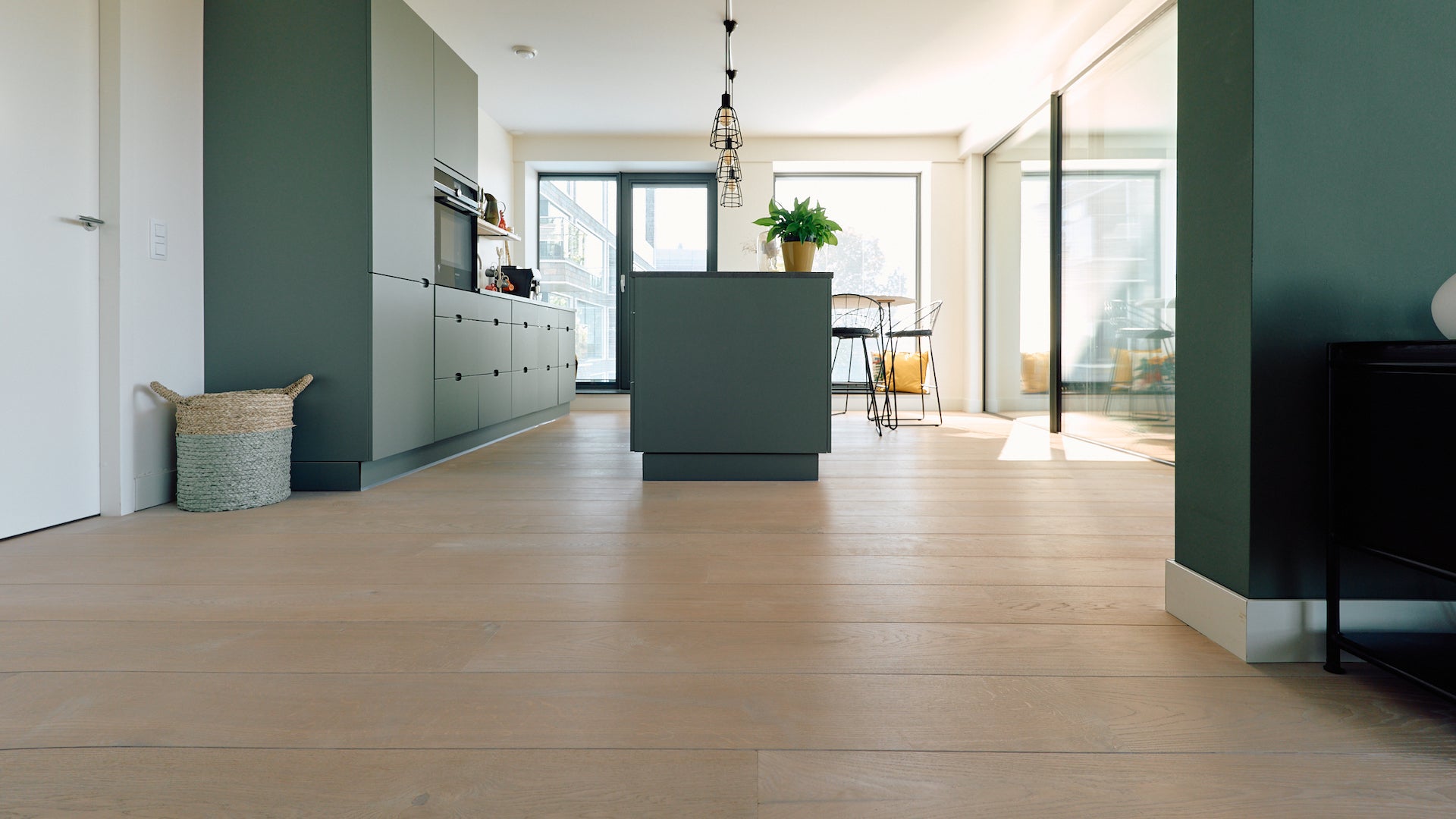
Bezoek de showroom
A wooden load-bearing floor forms the basis of a construction floor, consisting of wooden planks or plates supported by beams. This structure serves as a base for various floor finishes, such as wood. This construction is crucial for the stability of a building and is often found in older, historic buildings.
Installing underfloor heating on a wooden supporting floor is easily feasible. Instead of milling in the existing wooden construction, we first install fiber-bonded plasterboard in which we place the underfloor heating pipes, after milling the plates.
Features wooden floor on underfloor heating
These panels on the wooden supporting floor have a considerable mass, which makes them sound insulating and at the same time fire-retardant due to their composition. They also provide a sturdy and comfortable walking experience. The fibre-reinforced boards placed on top of the wooden supporting floor are ideal for installing underfloor heating due to their good properties and offer various options for floor finishes, including different wood species and colours. This means that the perfect wooden floor solution is available for everyone.
Types of Systems
There are two suitable underfloor heating systems for a wooden supporting floor: electric and warm water underfloor heating. Electrical systems are easier to install and suitable for smaller spaces. Hot water systems are often more efficient for larger spaces.
In systems with hot water, a distinction can be made between wet and dry systems. Wet systems are poured into the sand-cement or anhydrite work floor. Dry systems are placed on the work floor and have a shorter lead time.
Bezoek de showroom
Dry construction Underfloor heating on a wooden floor
A dry construction system can be installed on all types of work floors. First, an insulation layer is applied and then the dry construction system is applied. The pipes are pressed into the dry plate, which are "fixed" by means of a filler. The advantages of dry construction are the lower construction height, fast turnaround time (no long drying times) and less weight.
Milled floor Underfloor heating on a wooden floor
A milled floor is comparable to a dry construction system. Gypsum fiber boards can be placed on top of the wooden floor, in which the underfloor heating is milled. These slots must then be closed so that the pipes are secured.
These gypsum fiber boards can be provided with a thermal and sound insulating layer, making them meet the requirements in older apartments. The gypsum fiber boards are also fire retardant.
Magazine Vol inspiratie
Magazine aanvragenElectric Underfloor heating opens a wooden floor
Electric underfloor heating is suitable for smaller spaces, such as a bathroom, and heats up quickly. The underfloor heating is thin, so you need minimal floor height. Electric underfloor heating is suitable for short use one day. For long-term use, it is advisable to choose a different system due to power consumption.
Insulating for the underfloor heating
Older homes are often insufficiently insulated. Because underfloor heating operates at lower temperatures than traditional radiators, we recommend insulating the house. For example, by installing floor, wall and roof insulation and providing double glazing (HR or better) to the windows, you create a closed space with as little heat loss as possible.
An energy label B (without solar panels or heat pump) is recommended to use underfloor heating as main heating. If the insulation value of the home is too low, you lose too much heat, resulting in no pleasant temperature in the room. In addition, a better energy label ultimately ensures even lower energy consumption.
Wooden Floor Preparation
It is important to check the load-bearing capacity of the floor, so that you know whether the floor can support the extra weight of the underfloor heating . Are there no rotten beams, are the floorboards not creaking? If this is the case, resolve this before installing a floor over it. If applicable, floor insulation in combination with sufficiently ventilated crawl space and a vapour-tight layer are necessary to prevent moisture problems and ensure better efficiency of your underfloor heating .
Bezoek de showroom
Finishing And Floor Covering
There are many types of floor coverings suitable for underfloor heating, such as tiles, natural stone or laminate. Wood has a slightly higher insulation value and also retains heat for longer. A wooden floor on underfloor heating with a heat pump ensures that the system "switches on" less often, the heating curve flattens out and the combination works more efficiently than with other types of floor covering.
Conclusion
Underfloor heating on wooden construction floors is a sustainable and comfortable solution for heating a home. There are various options for combining underfloor heating with different heat sources and finishing with a wooden floor.
Advantages of underfloor heating on a wooden floor:
- Comfort: Underfloor heating ensures an even heat emission, so that no cold spots arise. This is especially nice for people who work or study at home a lot.
- Energy efficiency: Underfloor heating is an efficient way to heat a home. This is because the heat source does not have to work as hard to keep the home at the right temperature. This can lead to lower energy costs and a smaller CO2 footprint.
- Sustainability: Underfloor heating can be combined with various sustainable heat sources, such as a heat pump or solar panels. This can contribute to a more sustainable home.
Curious about the possibilities?
Would you like more information about underfloor heating on a wooden floor or installing underfloor heating ? Visit one of our showrooms to coordinate the project and view our beautiful wooden floors.
Frequently Asked Questions
What are the advantages of underfloor heating ?
Some of the advantages of underfloor heating are even heat distribution in the room, comfortable floor temperatures, no radiators taking up space, energy efficiency, reduced air circulation and the possibility of combining the underfloor heating with other heating systems.
How does underfloor heating work?
Underfloor heating works by allowing hot water to flow through heating pipes or heating mats installed in the floor. This heats the floor, which in turn gives off heat to the room. The water is heated by a heat source, such as a central heating boiler or a heat pump.
Is underfloor heating energy efficient?
In general, underfloor heating is energy efficient, especially in well-insulated rooms. Because underfloor heating operates at lower temperatures than traditional radiators, it can be more efficient and have lower energy costs.
Can you install underfloor heating in every room?
In principle, underfloor heating can be installed in most rooms, but there are some factors to take into account. Examples are the available space for the installation of the heating pipes or mats, the floor covering and the insulation of the room.
Can I combine underfloor heating with radiators?
Yes, underfloor heating can be combined with radiators. This is often done in rooms where additional heating is required. Good control and balance between underfloor heating and radiators is important to achieve the desired heat distribution.
Can you install underfloor heating on a wooden floor?
Yes, the installation of underfloor heating on a wooden (supporting) floor is possible. By installing a special intermediate floor in which the pipes are placed the wooden floor can remain in place. It is advisable to insulate the wooden supporting floor from below.
- Choosing a selection results in a full page refresh.
- Opens in a new window.
